In areas where squirrel populations are abundant and potentially disruptive, people often seek solutions for their management. One common query that arises in these discussions is whether owls could provide a natural means of controlling squirrel numbers. This question, “Do owls eat squirrels?” reflects the hope that natural predators could help regulate squirrel populations. Understanding the predatory behavior of owls towards squirrels becomes essential in exploring sustainable and eco-friendly solutions for managing squirrel populations.
Do owls eat squirrels?
Yes, owls indeed prey upon squirrels. Owls, being carnivorous birds of prey, naturally hunt a variety of animals for sustenance, and squirrels are among their favored targets. Whether by day or by night, certain owl species actively seek out squirrels as a part of their diet. These small mammals often found scampering through trees, become particularly vulnerable to owl attacks when they venture onto the ground.
Owls, being skilled hunters, capitalize on these moments of vulnerability to capture squirrels. This dietary preference underscores the intricate relationship between owls and squirrels in the wild. It’s important to recognize that owls exhibit a diverse diet, which includes insects, reptiles, other birds, and various mammals aside from squirrels. This dynamic of predator and prey serves as a fundamental aspect of the ecological balance within their habitats.
How Long Do Owls Live
Understanding the predatory behavior of owls towards squirrels sheds light on the intricate dynamics of the natural world. By recognizing the role that owls play as hunters of squirrels, we gain insight into the complexities of the ecosystem and the interconnections between its inhabitants.

How Owls Hunt Squirrels
Owls, masters of stealth and precision, employ a range of techniques when hunting squirrels. Understanding these methods unveils the intricate strategies these nocturnal predators utilize in capturing their elusive prey.
Silent Flight:
Owls are renowned for their near-silent flight, a result of specialized feather structures that dampen noise. This stealthy approach allows them to glide through the night undetected, minimizing the chances of alerting their prey.
Keen Vision:
With large, forward-facing eyes, owls possess exceptional vision adapted for low-light conditions. This keen eyesight enables them to spot even the slightest movements of their squirrel prey, whether amidst the darkness of night or the dappled light of day.

Ambush Tactics:
Owls often employ ambush tactics when hunting squirrels. They perch silently on branches or other vantage points, patiently awaiting the opportune moment to strike. When a squirrel ventures within range, the owl swiftly launches its attack with remarkable speed and precision.
Silent Descents:
Once an owl has identified its target, it descends upon it with graceful yet swift movements. By adjusting its wings and tail feathers, the owl can execute controlled descents, allowing it to approach its prey without alerting it to impending danger.
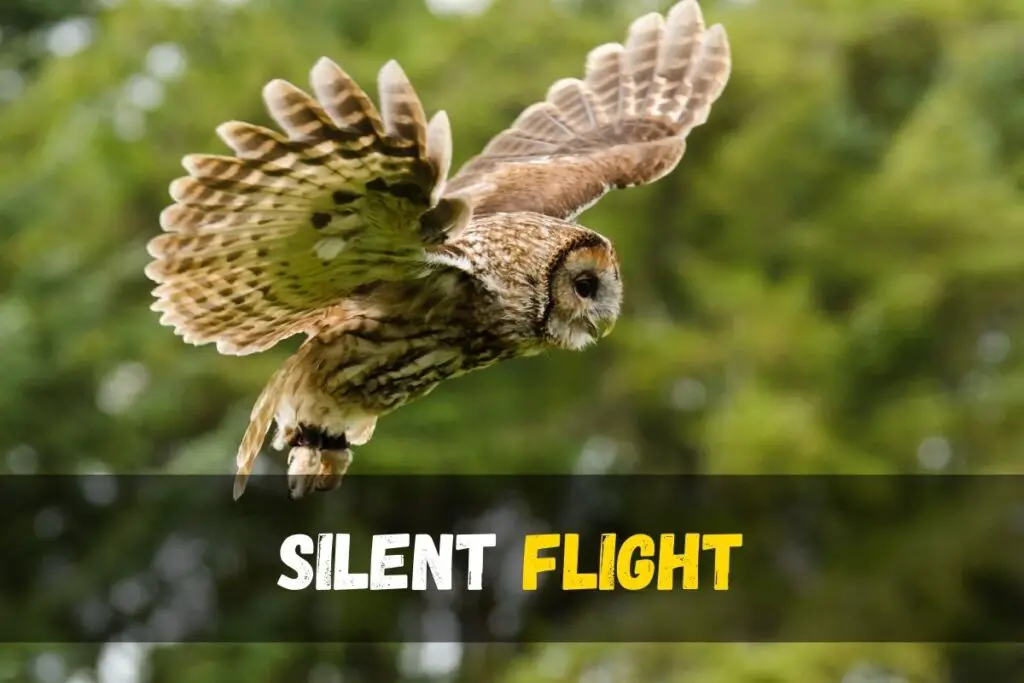
Powerful Talons:
Central to the owl’s hunting prowess are its powerful talons. These razor-sharp claws, coupled with a strong grip, enable the owl to grasp its squirrel prey securely, ensuring minimal chance of escape.
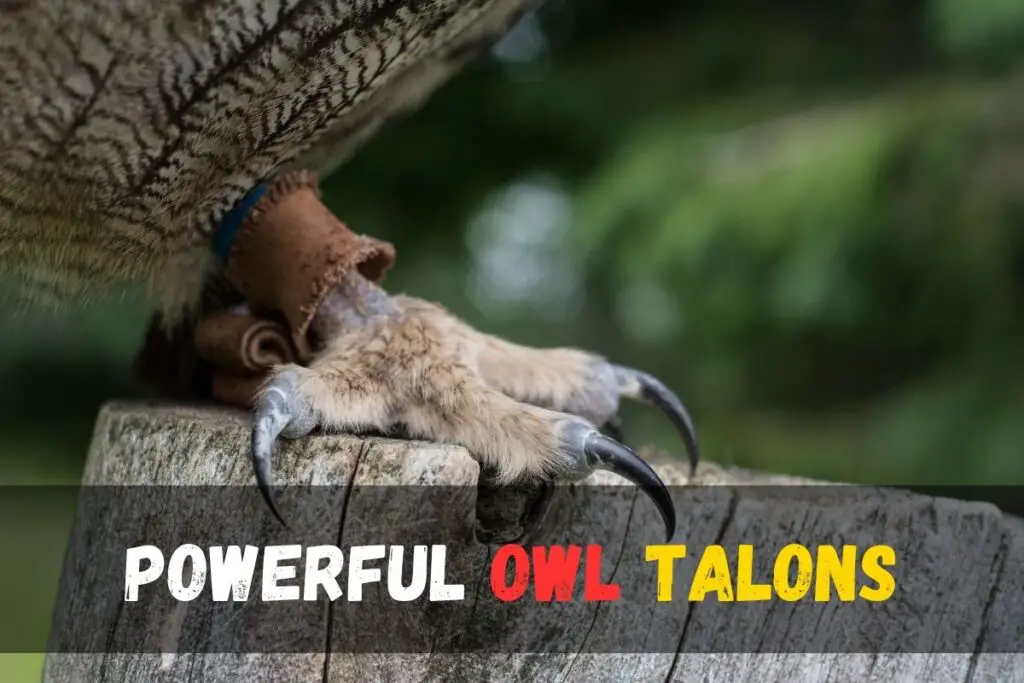
Swift Strikes:
When the moment is right, the owl strikes with lightning speed, seizing the squirrel in its talons before it can react. With a swift and decisive motion, the owl dispatches its prey, securing a vital meal in the cycle of predator and prey.
How Long Are Owls Legs?
What Types of Owls Commonly eat squirrels?
Barred Owls (Strix varia):
Barred Owls are renowned for their adaptability and hunting prowess. With their distinctive barred plumage and haunting hoots, they are formidable hunters of small mammals, including squirrels. Barred Owls often hunt from perches near forest edges or wetlands, using their keen eyesight and silent flight to ambush unsuspecting prey. Their ability to navigate dense foliage and their diverse diet makes them one of the top predators in their habitat, with squirrels being a common target.
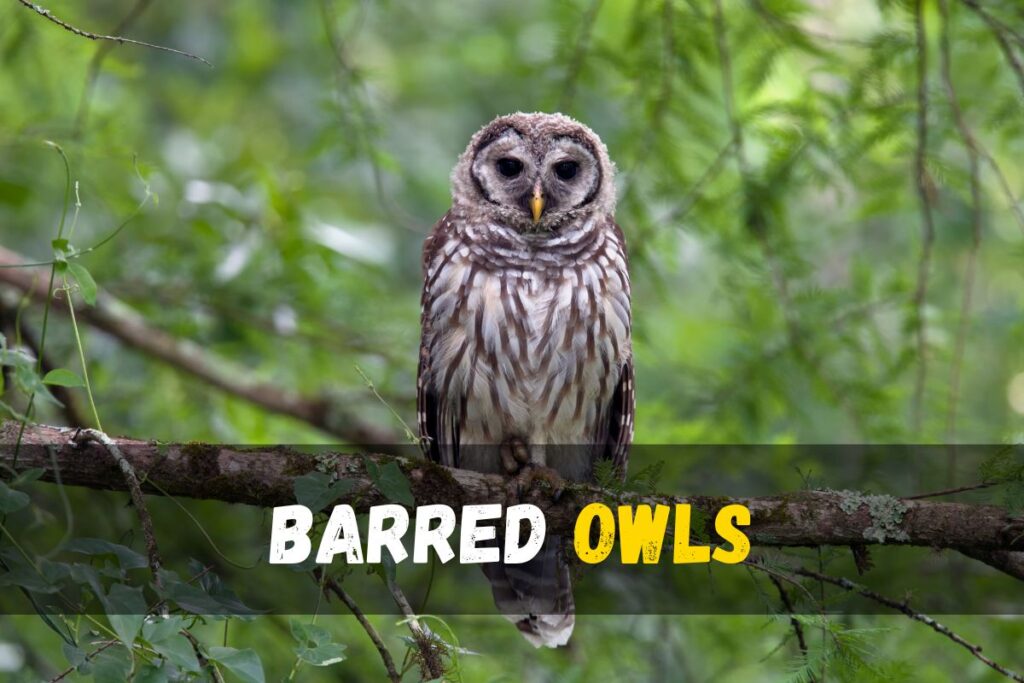
Great Horned Owls (Bubo virginianus):
Great Horned Owls, known for their piercing yellow eyes and prominent ear tufts, are apex predators in their ecosystems. These formidable hunters have a diverse diet that includes mammals, birds, and even reptiles. With their powerful talons and silent flight, Great Horned Owls are capable of taking down prey much larger than themselves, including squirrels. Their ability to thrive in a variety of habitats, from forests to deserts, makes them one of the most widespread and successful owl species in North and South America.
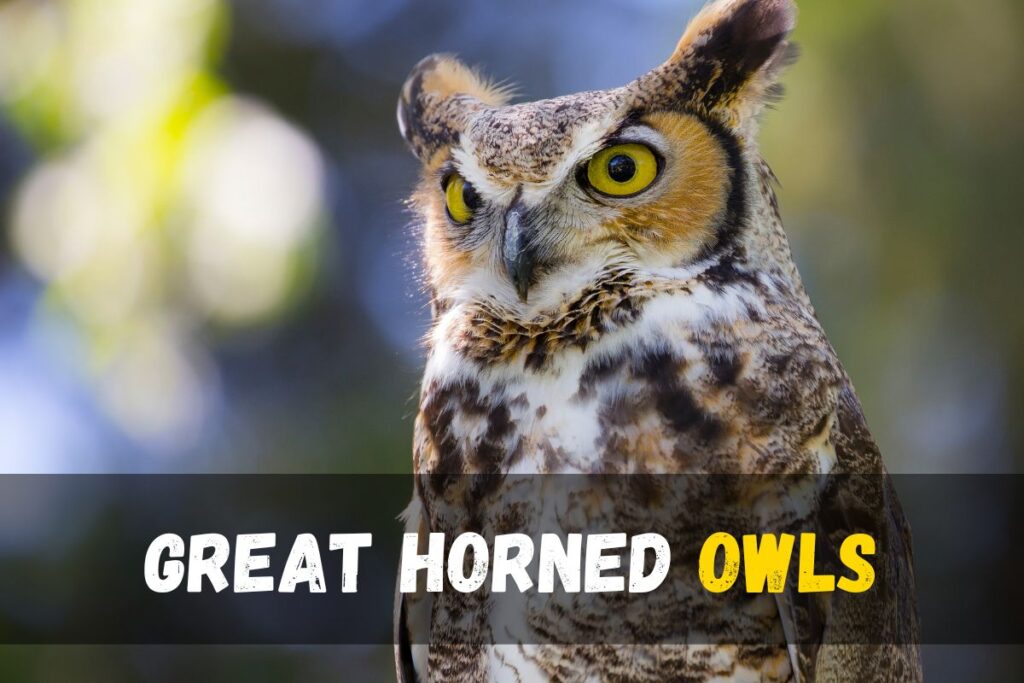
Spotted Owls (Strix occidentalis):
Spotted Owls are iconic inhabitants of old-growth forests in western North America. Recognizable by their mottled brown plumage and dark eyes, they are known for their preference for mature forests and their reliance on dense canopy cover for hunting. Spotted Owls primarily prey on small mammals like squirrels, playing a crucial role in regulating rodent populations within their habitat. However, their populations have been threatened by habitat loss and fragmentation, making conservation efforts critical for their survival.

Barn Owls (Tyto alba):
Barn Owls, with their distinctive heart-shaped faces and pale plumage, are stealthy nocturnal hunters. Unlike many owl species, they have a unique hunting strategy, relying on their exceptional hearing to locate prey in the darkness. Barn Owls are skilled rodent hunters, and squirrels are among their favored prey. Their ability to inhabit diverse habitats, including farmlands, grasslands, and urban areas, has earned them the title of one of the most widespread owl species globally.
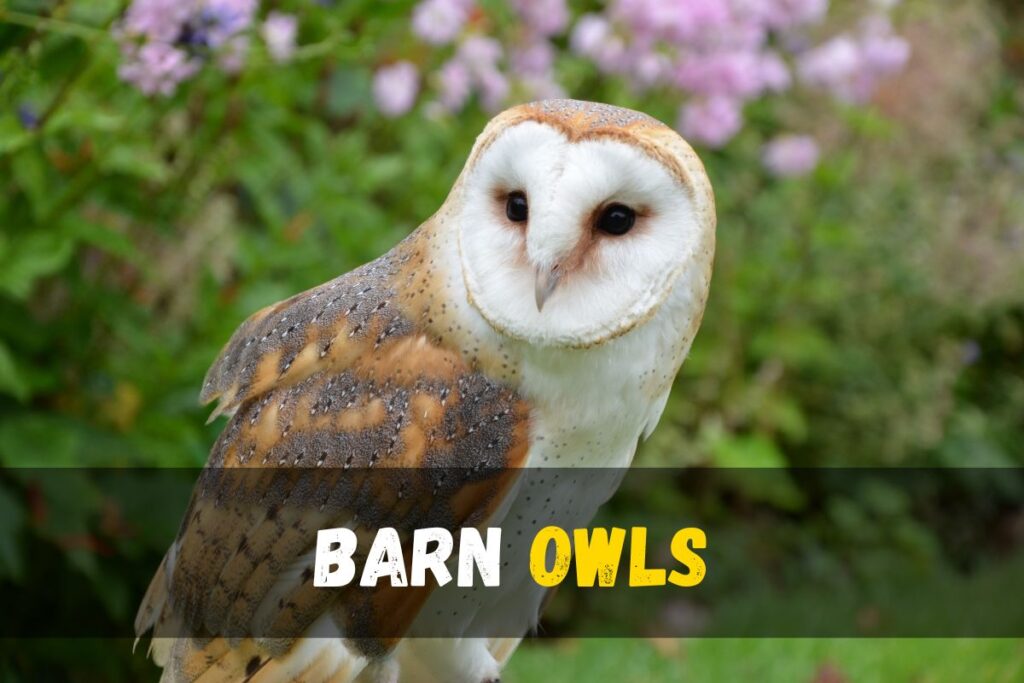
Long-eared Owls (Asio otus):
Long-eared Owls, named for their long feather tufts resembling ears, are elusive hunters of the night. With their cryptic plumage and silent flight, they are well-suited for stalking prey in dense vegetation. Long-eared Owls primarily feed on small mammals, including squirrels, in a variety of habitats ranging from woodlands to marshes. Despite their widespread distribution, they are often difficult to spot due to their secretive nature and nocturnal habits.
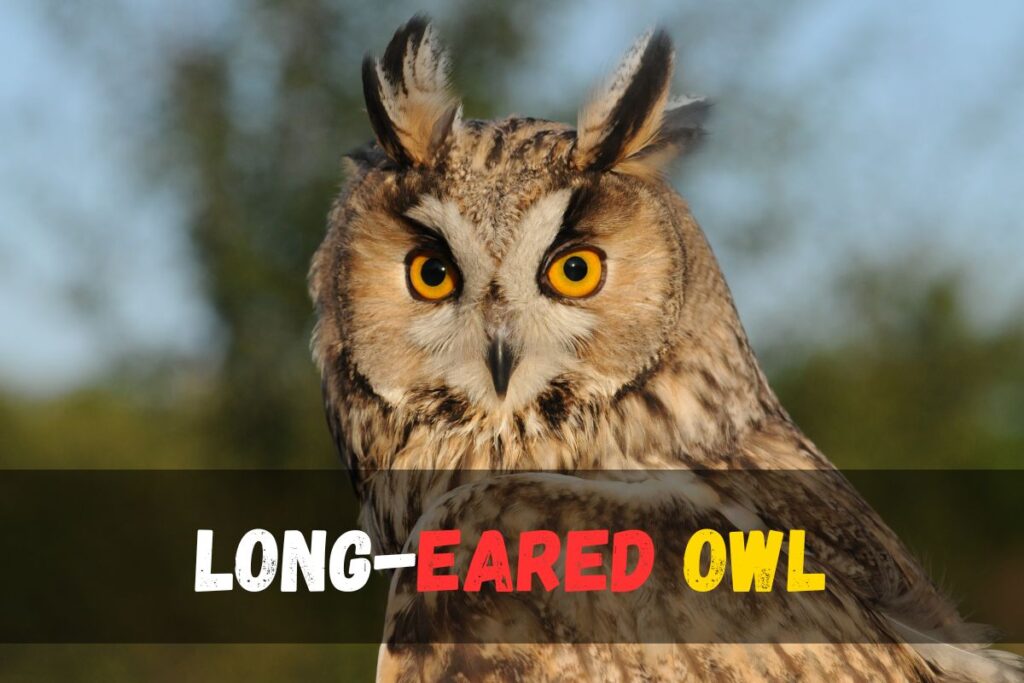
Snowy Owls (Bubo scandiacus):
Snowy Owls, renowned for their striking white plumage and piercing yellow eyes, are iconic inhabitants of the Arctic tundra. While their primary prey is lemmings, Snowy Owls are opportunistic hunters known to supplement their diet with other small mammals, including squirrels. Their ability to endure harsh Arctic conditions and their nomadic hunting behavior make them fascinating subjects of study for researchers studying avian ecology and adaptation to extreme environments.

Great Grey Owls (Strix nebulosa):
Great Grey Owls, with their large size and intricate grey plumage, are majestic predators of the boreal forests. These silent hunters rely on their keen hearing and excellent vision to locate prey in the dense vegetation of their habitat. Great Grey Owls primarily feed on small mammals like squirrels, playing a vital role in controlling rodent populations in their ecosystem. Despite their large size, they are masters of stealth, often blending seamlessly into their surroundings as they hunt under the cover of darkness.
Burrowing Owls (Athene cunicularia):
Burrowing Owls, unlike most owl species, are diurnal hunters known for their association with open grasslands and prairies. These small owls inhabit burrows dug by mammals like prairie dogs, using them as shelter during the day. Burrowing Owls primarily feed on insects, small mammals, and occasionally birds, with squirrels being among their prey. Their unique nesting habits and adaptation to human-altered landscapes have made them a focal species for conservation efforts aimed at preserving grassland ecosystems.
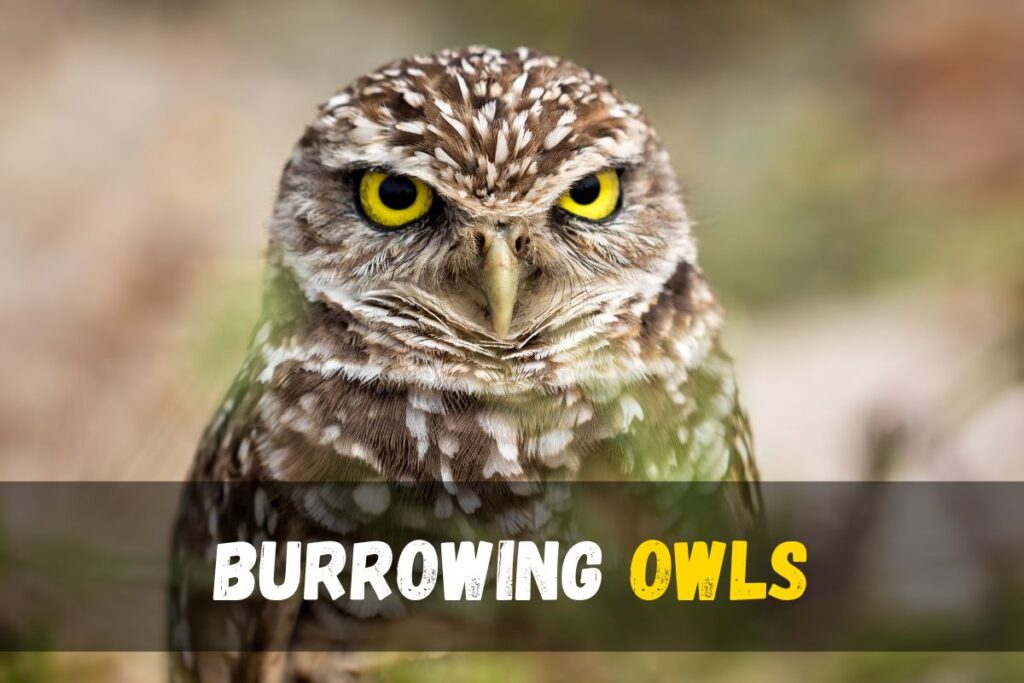
Boreal Owls (Aegolius funereus):
Boreal Owls are secretive inhabitants of northern forests, known for their cryptic plumage and haunting calls. Despite their small size, they are proficient hunters of small mammals like squirrels, which they capture using their sharp talons and precise flight. Boreal Owls are well-adapted to life in cold climates, with dense feathering providing insulation against frigid temperatures. Their reliance on mature forests for nesting and hunting makes them vulnerable to habitat loss and fragmentation, highlighting the importance of conservation measures to protect their forested habitats.
Do Owls Mate for Life?
What other birds eat squirrels?
Like owls, hawks, eagles, and falcons are birds of prey known for their exceptional speed and agility in flight. While their primary diet may consist of rodents, small birds, and insects, certain species of hawks and falcons have been observed hunting squirrels. These raptors employ similar tactics to owls, utilizing their sharp talons and keen eyesight to capture squirrels in flight or from perches. Although eagles typically prefer larger prey such as fish, rabbits, and even other birds, they have been known to target squirrels when other food sources are scarce. With their powerful beaks and talons, eagles possess the strength and skill necessary to capture and subdue squirrels, particularly those that may be caught off guard or isolated from cover.

Can Baby Owls Eat Squirrels?
Yes, baby owls can indeed eat squirrels, but there are important considerations to understand. Baby owls, known as owlets, typically share the same diet as their parents. This means that they are capable of consuming squirrels like adult owls. However, owing to their young age, owlets are limited in how they acquire their food. They rely on their parents to regurgitate food for them or to provide small food items that are suitable for their size and age. As they grow and develop, owlets gradually become able to swallow smaller pieces of prey, including squirrels. Therefore, while baby owls can eat squirrels, their ability to do so evolves as they mature and become more proficient hunters.
Will Owls Eat Dead Squirrels?
When a dead squirrel is available, owls may indeed take advantage of the opportunity to feed on it. While they prefer fresh prey, scavenging for carrion can supplement their diet, especially during times when hunting live prey may be challenging.
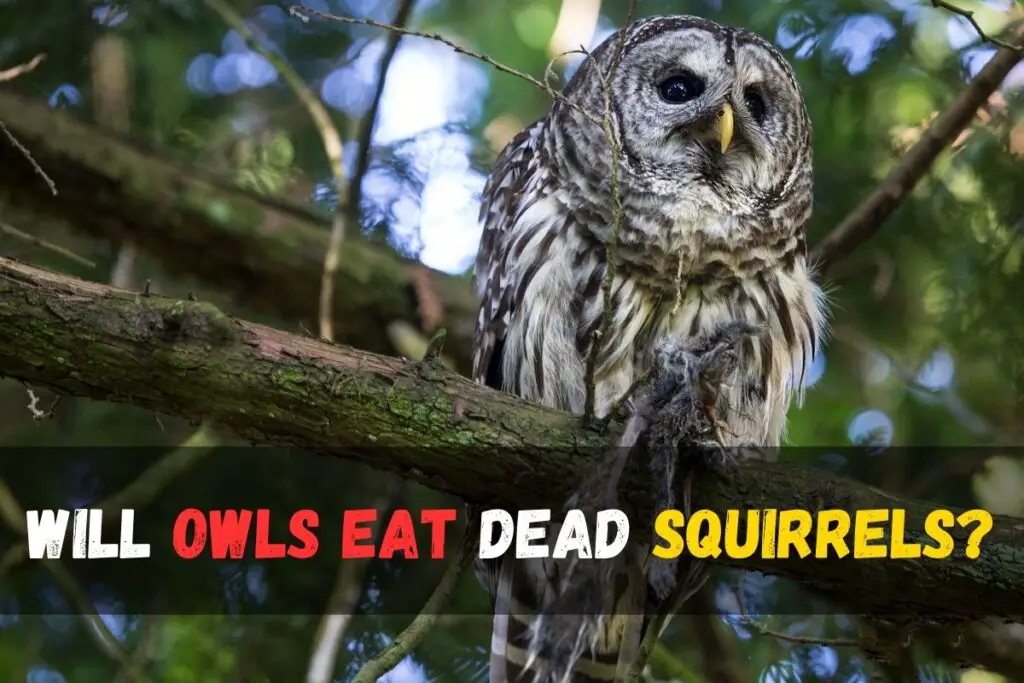
It’s important to note that owls are opportunistic feeders and will consume a variety of food sources depending on what is available in their habitat. So while they primarily hunt live prey, they won’t hesitate to make use of a readily available food source, such as a dead squirrel, if the opportunity arises.
What Not To Feed Owl?
When it comes to their diet, not everything is suitable for these birds of prey. While it might be tempting to offer various foods to an owl, it’s essential to understand what should be avoided to ensure their health and well-being.
Do Owls Eat Snakes?
Avoid Feeding the Following:
- Processed Foods: Owls thrive on a diet of whole prey items such as mice, rats, and small birds. Processed foods like bread, chips, or any human snacks are not suitable for them and can lead to malnutrition or digestive issues.
- Dairy Products: Owls are lactose intolerant, meaning they lack the necessary enzymes to digest dairy products properly. Feeding them milk, cheese, or any dairy-based items can result in stomach upset and discomfort.
- Sugary Foods: Just like humans, owls should steer clear of sugary treats like candy, chocolate, or sugary drinks. These foods offer no nutritional value and can cause obesity, diabetes, or dental problems in owls.
- Insects Treated with Pesticides: While insects are a natural part of an owl’s diet, those treated with pesticides can be toxic to them. Always ensure any insects offered to owls are from pesticide-free environments to avoid poisoning.
- Bones from Cooked Meat: Although owls eat bones as part of their diet, cooked bones are brittle and can splinter, posing a choking hazard or causing internal injuries. Stick to raw bones if offering them as part of their diet.
- Large or Sharp Objects: Avoid offering owls large chunks of food or items with sharp edges that can injure their delicate digestive systems. Always ensure prey items are appropriately sized for the owl’s species.
Do all owls eat squirrels?
Some species of owls, such as the great horned owl and barred owl, are known to prey on squirrels when given the opportunity. These larger owls have the strength and hunting skills to capture and consume squirrels, which are abundant in their habitats. However, smaller owls like the eastern screech owl may not regularly hunt squirrels due to their smaller size and preference for smaller prey like insects and mice.
It’s important to note that owls are opportunistic hunters and will prey on whatever is most readily available and suits their dietary needs. Their diet may include rodents, birds, insects, and even fish, depending on their location and the time of year. So while squirrels may be on the menu for some owl species, it’s not a universal dietary staple for all owls.


